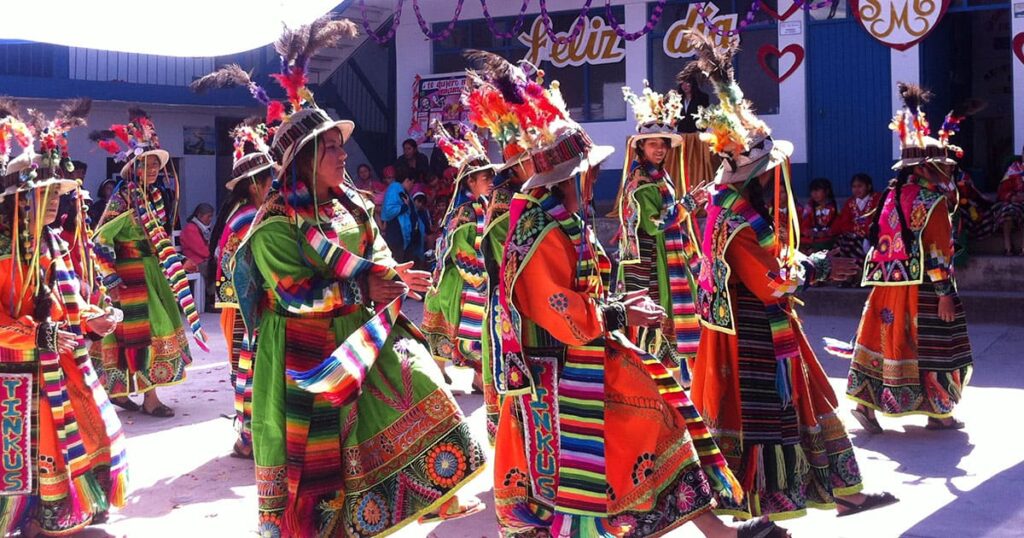Peru is South America’s third largest country, followed by Brazil and Argentina. Peru’s people are a mix of many cultures, including Indians, Spanish, and other Europeans, as well as descendants of African and Asian slaves (Stone, 2021). Ethnic Groups Amerindian 45%, mestizo (mixed Amerindian and white) 37%, white 15%, black, Japanese, Chinese, and other 3%. Predominant Language Spanish (official) 84.1%, Quechua (official) 13%, Aymara (official) 1.7%, Ashaninka 0.3%, other native languages (includes a large number of minor Amazonian languages) 0.7%, other 0.2% (Thomson, 2018). According to the Native Peruvian calendar, November 2 is the Day of the Dead, when spirits visit their relatives again. The following English words are actually derived from Quechua: alpaca, condor, gaucho, jerky, lima (in the context of lima beans), llama, pampa, puma, quinine, quinoa, and vicuna. Cusco’s architecture is among the most ancient on the continent, making it a popular destination among archeologists and adventurers. Some ancient Inca customs are still practiced in the city, such as Inti Raymi, an Incan celebration of the winter solstice and the sun god’s power (Osorio, 2021). As a part of the Intangible Cultural Heritage of Humanity, UNESCO has designated the festival of the Virgin of Candelaria, the Inti Raymi festival, which is known as “the Sun’s festival” and is considered to be the oldest and most famous festival in the Peruvian Andes, as well as the Marinera Festival, a famous and representative dance on Peru’s coast (Palm, 2021). In Peru, one of the barriers to culture (Sternquist, 2018) is respecting the indigenous people and their traditions. Avoid referring to them as indios. A more polite term is indígenas (Plum, 2019)



